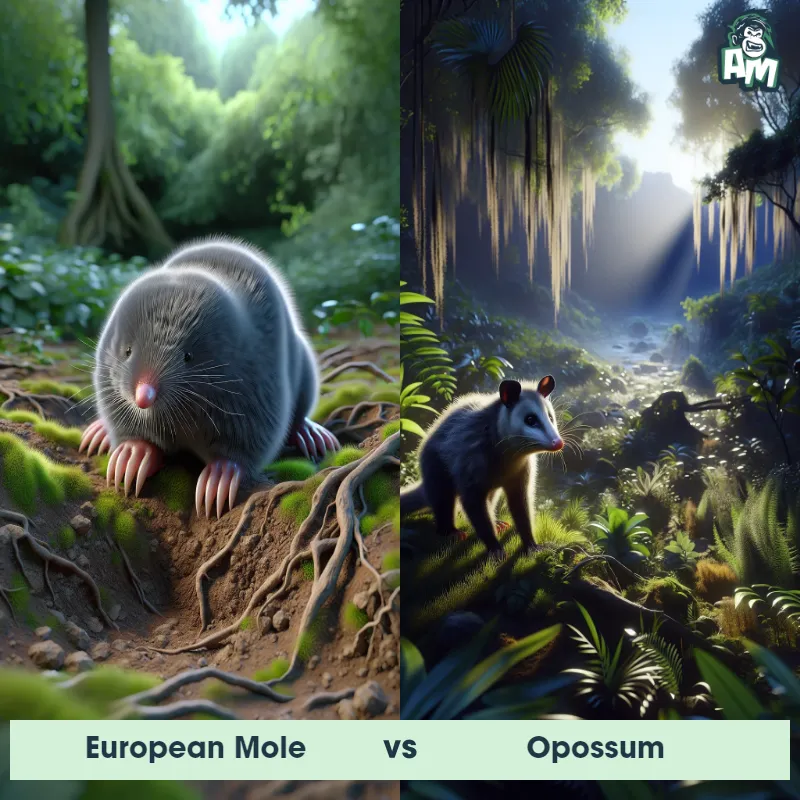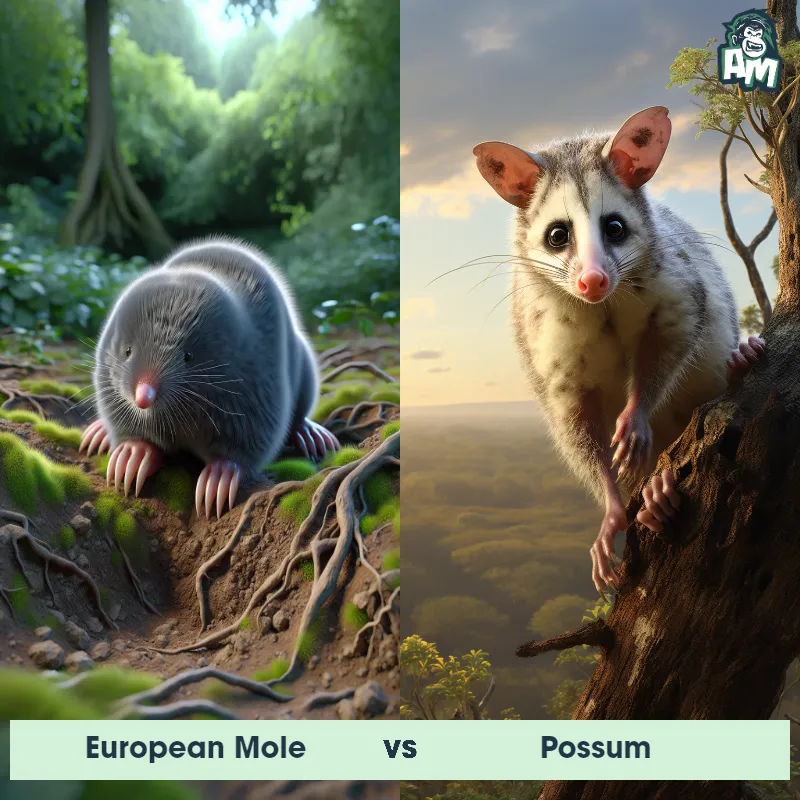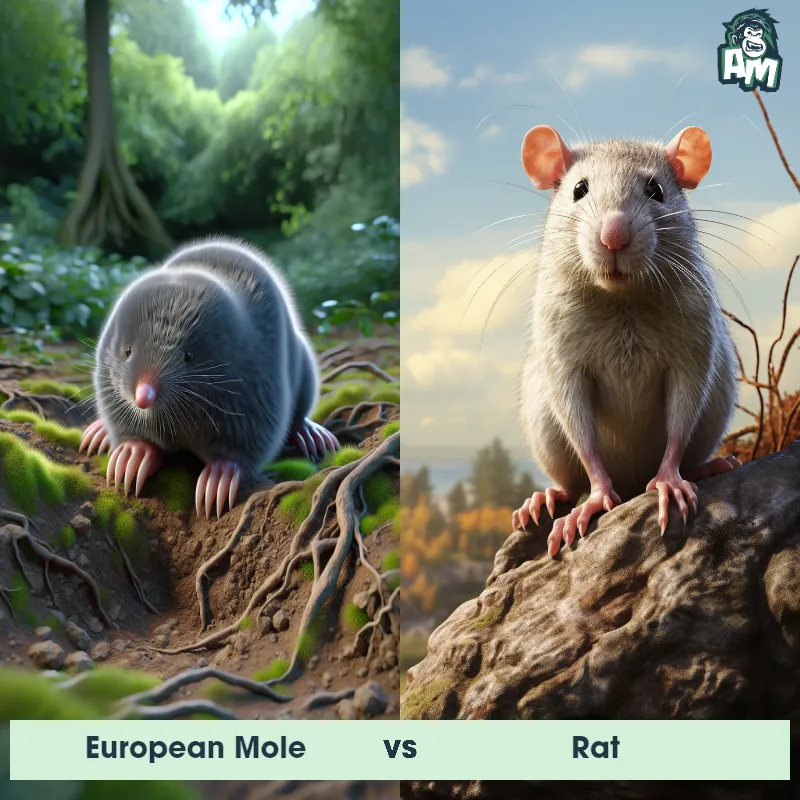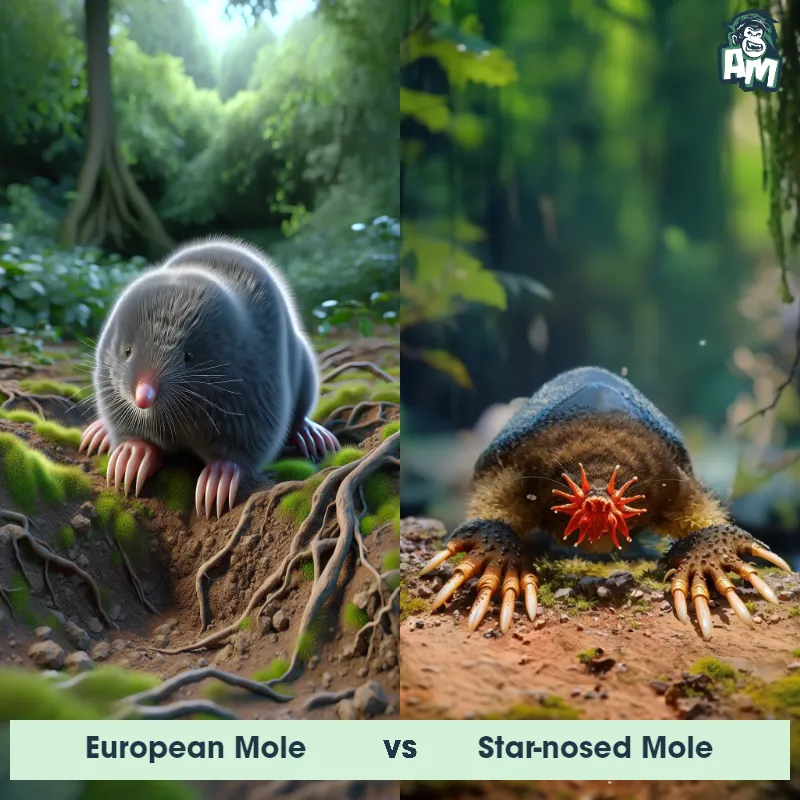The European Mole
The European Mole, also known as Talpa europaea, is a small mammal found in various parts of Europe. It is known for its cylindrical body, measuring around 12-15 centimeters in length, and covered in dark velvety fur. The mole has short and powerful limbs with sharp claws, perfectly adapted for burrowing underground. It possesses a pointed snout and small eyes, which are almost hidden within its fur due to its subterranean lifestyle. The European Mole is a solitary creature, spending most of its time in intricate underground tunnel systems, where it searches for food and creates nesting burrows.

| European Mole | |
|---|---|
| Size | 4.3 to 6.7 inches (11 to 17 centimeters) |
| Weight | 2.8 to 4.5 ounces (80 to 130 grams) |
| Speed | 0.5mph (0.8km/h) |
| Key Strength | Unknown |
| Biggest Weakness | Size and physical strength |
| Scientific Name | Talpa europaea |
| Family | Talpidae |
| Habitat | Underground, burrows |
| Geography | Europe, including Great Britain, Scandinavia, and parts of Russia |
| Diet | Earthworms and insects |
| Lifespan | 3 years - 6 years |

The European Mole
The European Mole, also known as Talpa europaea, is a small mammal found in various parts of Europe. It is known for its cylindrical body, measuring around 12-15 centimeters in length, and covered in dark velvety fur. The mole has short and powerful limbs with sharp claws, perfectly adapted for burrowing underground. It possesses a pointed snout and small eyes, which are almost hidden within its fur due to its subterranean lifestyle. The European Mole is a solitary creature, spending most of its time in intricate underground tunnel systems, where it searches for food and creates nesting burrows.
Fun Fact: European Moles have specialized glands that produce a unique scent used for communication, marking territory, and finding mates.
| European Mole | |
|---|---|
| Size | 4.3 to 6.7 inches (11 to 17 centimeters) |
| Weight | 2.8 to 4.5 ounces (80 to 130 grams) |
| Speed | 0.5mph (0.8km/h) |
| Key Strength | Unknown |
| Biggest Weakness | Size and physical strength |
| Scientific Name | Talpa europaea |
| Family | Talpidae |
| Habitat | Underground, burrows |
| Geography | Europe, including Great Britain, Scandinavia, and parts of Russia |
| Diet | Earthworms and insects |
| Lifespan | 3 years - 6 years |
European Mole Matchups
We use AI to simulate matchups between the European Mole and other animals. Our simulation considers size, strength, and natural predatory behaviors to determine the most likely outcome.
European Mole: Diet, Predators, Aggression, and Defensive Behaviors
What do European Moles eat?
European Moles primarily feed on earthworms, insects, larvae, and other invertebrates found underground. They have a high metabolism and need to eat regularly to maintain their energy levels. Moles have strong front limbs with sharp claws that help them dig through the soil and locate their prey.
Do European Moles have any predators?
European Moles have a few natural predators, including birds of prey such as owls and hawks, as well as carnivorous mammals like foxes, stoats, and weasels. These predators can detect the moles underground by their scent or sound and may dig them out of their burrows to capture them.
Are European Moles aggressive?
European Moles are typically solitary animals and are not known to be aggressive towards other moles or animals. They may display aggression towards intruders in their territory, as they are territorial animals. However, they are more focused on defending their burrows and finding food than engaging in aggressive behavior.
Do European Moles fight?
European Moles may engage in fights with territorial disputes or when competing for mates during the breeding season. These fights are often brief and involve pushing, shoving, and vocalizations rather than physical harming each other. The dominant mole usually establishes its territory or wins the mating rights through these interactions.
How do European Moles defend themselves?
European Moles have several defense mechanisms to protect themselves from predators. They have thick fur that helps insulate them underground and protect them from soil particles. Their sharp claws are used for digging burrows and creating escape routes. Additionally, moles can emit high-frequency sounds that may confuse or deter predators when threatened.
What is the European Moles' biggest weakness in a fight?
One of the European Moles' biggest weaknesses in a fight is their small size and relatively fragile bodies. While they have strong front limbs and sharp claws for digging, they are not well-equipped for physical combat with larger predators or other animals. Their primary defense mechanism is to retreat into their burrows or tunnels to escape danger.
Fun Fact: These moles have been known to dig tunnels at an impressive speed of around 4 meters per hour, using their powerful forelimbs and their compact body structure, making them highly efficient diggers.
Fun Fact: Contrary to popular belief, European Moles are exceptional swimmers and can survive underwater for up to 5 minutes by reducing their heart rate and conserving oxygen.
















